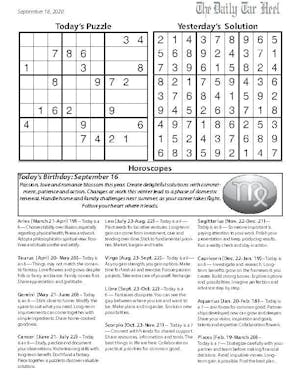Glenna Batson’s lecture today, “Dance for Parkinson’s … Exploring the Brain’s Movement Potential,” is the latest installment in the Friday Center’s series “What’s the Big Idea?”
Batson is a former professor of physical therapy at Winston-Salem State University and an independent researcher on the effects of dance on Parkinson’s patients.
Staff writer Elizabeth Tew spoke to Batson about her research and the way it can be used to help treat the disease.
Daily Tar Heel: How does Parkinson’s disease affect the brain?
Glenna Batson: Parkinson’s is a chronic, progressive and degenerative disease.
We don’t know the cause. We are suspecting there is a combination of genes and environmental effects that cause this disease.
The main symptoms are things that affect the motor system. There are problems with balance, and the person’s movements are often rigid.
DTH: What has your research on the effects of dance shown?
GB: Dance provides a very rich environment where a person can have all of their senses stimulated at once.
Dance also requires a person to think on their feet.
DTH: What types of dances should someone with Parkinson’s partake in?
GB: Tango, modern contemporary dance, and another is ballet.
The research I am doing is using improvisation. I went on the idea that everyday movement requires improvisation. We can’t always plan our lives to the nth degree.
We have to have some flexibility. My idea was that people could generate movement on their own without having to follow a teacher or music. The research suggests that if you show people the movement, they can generate it.
DTH: How does dance act as a stimulus?
GB: The brain and body work together. A lot of times, the body gives the brain very important messages about movement and programs the brain how to move.
They work very reciprocally and very much together. Movement at its best needs good balance and the ability to problem solve in the movement.
DTH: Why should dancers and physical therapists be aware of this treatment?
GB: The more people become educated about the need for whole body expressive movement, the more people will come on board.
Many people believe they can’t dance, but everyone can dance when taught properly.
It is very scary for someone that has a degenerative illness to enter into that setting. Once the initial fear has been somewhat lowered by the community spirit of the group, then everyone joins and everyone enjoys it.
DTH: Why are you passionate about the use of dance to treat Parkinson’s?
GB: I myself am a dancer. I just really believe in the generative power in dance.
I believe one of the things that helps anyone is to be allowed to be creative and be expressive.
In the work that I have done over the years, I just see people come alive in ways that they never believed were possible, and it is so inspiring.
Contact the desk editor at arts@dailytarheel.com.
To get the day's news and headlines in your inbox each morning, sign up for our email newsletters.




